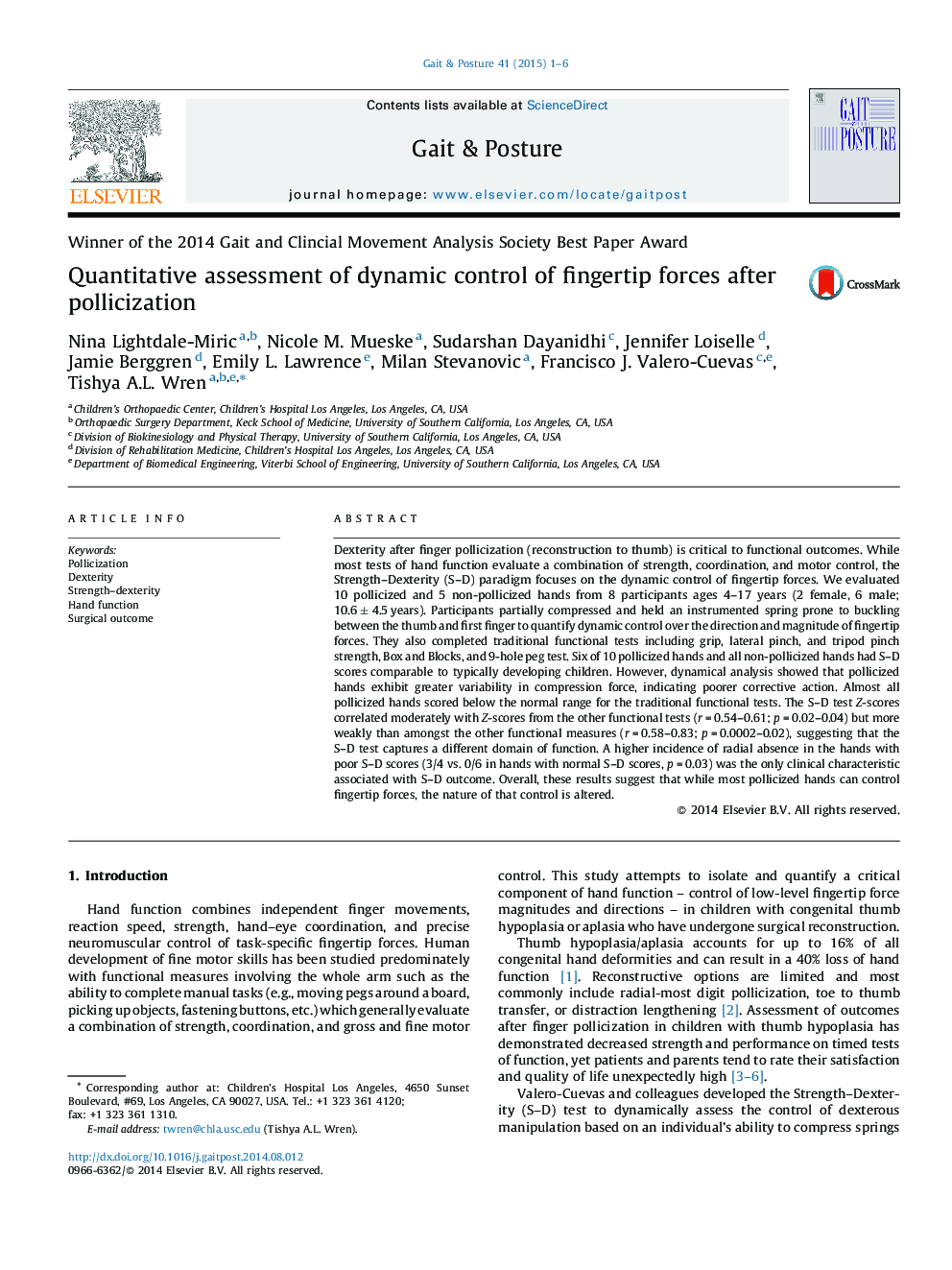| کد مقاله | کد نشریه | سال انتشار | مقاله انگلیسی | نسخه تمام متن |
|---|---|---|---|---|
| 6205618 | 1265627 | 2015 | 6 صفحه PDF | دانلود رایگان |

- The S-D test can quantitatively assess a child's control over fingertip forces.
- Pollicized hands can control fingertip forces, but use altered control strategies.
- Radial absence is a risk factor for poor dexterity outcome after pollicization.
Dexterity after finger pollicization (reconstruction to thumb) is critical to functional outcomes. While most tests of hand function evaluate a combination of strength, coordination, and motor control, the Strength-Dexterity (S-D) paradigm focuses on the dynamic control of fingertip forces. We evaluated 10 pollicized and 5 non-pollicized hands from 8 participants ages 4-17 years (2 female, 6 male; 10.6 ± 4.5 years). Participants partially compressed and held an instrumented spring prone to buckling between the thumb and first finger to quantify dynamic control over the direction and magnitude of fingertip forces. They also completed traditional functional tests including grip, lateral pinch, and tripod pinch strength, Box and Blocks, and 9-hole peg test. Six of 10 pollicized hands and all non-pollicized hands had S-D scores comparable to typically developing children. However, dynamical analysis showed that pollicized hands exhibit greater variability in compression force, indicating poorer corrective action. Almost all pollicized hands scored below the normal range for the traditional functional tests. The S-D test Z-scores correlated moderately with Z-scores from the other functional tests (r = 0.54-0.61; p = 0.02-0.04) but more weakly than amongst the other functional measures (r = 0.58-0.83; p = 0.0002-0.02), suggesting that the S-D test captures a different domain of function. A higher incidence of radial absence in the hands with poor S-D scores (3/4 vs. 0/6 in hands with normal S-D scores, p = 0.03) was the only clinical characteristic associated with S-D outcome. Overall, these results suggest that while most pollicized hands can control fingertip forces, the nature of that control is altered.
Journal: Gait & Posture - Volume 41, Issue 1, January 2015, Pages 1-6